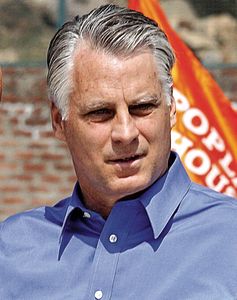Democracy is under assault around the world from crumbling institutions created after World War II to authoritarian regimes in Turkey and Brazil and a stronger axis between China and Russia. As populism, nationalism and corruption creep into previously established democracies, numerous governments are experiencing a troubling decline in people’s trust and loyalty. As the oldest and the largest democracies on the planet, this is one of the most compelling reasons for the United States and India to develop even closer strategic ties, resolve thorny trade issues and establish new energy and defence relations.
President Trump is scheduled to make his maiden visit to India on February 24 and 25. Such trips are potential “action-driving events” and can result in deeper relationships and even more progress with an already busy bilateral partnership. President Bill Clinton made a largely symbolic visit to India at the end of his second term in 2000 which ended up accomplishing many substantive policy objectives. Most importantly, it reset the relationship after the controversial Indian nuclear testing issue. President George W. Bush initiated a brand-new idea, moving forward with full civil nuclear cooperation with India, if it agreed to international safeguards and membership in the International Atomic Energy Agency. President Barack Obama, recognising our mutual vulnerabilities to international terrorism after the Mumbai attacks in 2008, proposed a robust new set of intelligence-sharing ideas, defence sales, homeland security agreements and regional partnerships. He visited India twice in his eight years in office. This indispensable partnership has significantly grown with bipartisan support from both the United States Congress and the Indian Parliament.
While Prime Minister Modi has just emerged from an election campaign, President Trump will arrive in India on the heels of a bitter impeachment process and virtually days before the presidential campaign season starts for him.
There could not be a more critical time for a meeting between President Trump and Prime Minister Modi. The economy is precariously slowing in India and the US is exploring more trade opportunities after the recent phase one negotiation with China and the new pact with Canada and Mexico. Short term, it is a priority to resolve the twin problems of providing the US fair access to Indian markets and for India to regain benefits from the previously rescinded Generalised System of Preferences (GSP). In the longer term, they should be building the foundation for a bigger and better free trade agreement to be signed in the next two to three years.
I would also expect this visit to include new defence sales and announcements of deeper common strategic interests in the Indian Ocean domain, on counterterrorism issues and on people-to-people ties. Indo-Pacific security matters will be front and centre in their dialogue. The defence package which is likely to be announced will total $2.6 billion for military helicopters made by Lockheed Martin. These multi-role helicopters would assist the Indian Navy in tracking submarines in the Indian Ocean. Additionally, the United Sates has offered India armed Guardian drones, the first such approval for a country outside the NATO alliance. India’s energy imports have risen from $2 billion recently to nearly $6 billion in 2019, with one trade analyst estimating it to touch $10 billion soon. This is a clear win-win proposition for both countries. India is trying to provide more affordable energy to its rural citizens and to address pollution in cities. The United States has the technology expertise and exports to accommodate this growing demand. Energy, climate change and cyber technology are all issues with prodigious long-term potential. Just as Prime Minister Modi met with American constituents in Houston on his last trip, there could be a similar “Howdy Trump” gathering in India. The Trump and Modi Twitter accounts should break records when this takes place!
Foreign policy issues such as Afghanistan, Pakistan and China are possible topics of conversation. Both leaders share concerns regarding China’s aggressive posture in the South China Sea and the Indian Ocean. Prime Minister Modi will be interested in America’s withdrawal from Afghanistan. Both are worried about Pakistan exporting terrorism.
It is doubtful that Trump will raise human rights issues, such as Kashmir or the new Citizenship (Amendment) Act. Each of these has caused protests in India and raised legitimate concerns in the United States Congress. Members of Congress have introduced legislation, held hearings and written letters about these developments. Two democracies, based on rule of law, free press and human rights for all, should be capable of discussing these seminal issues without it derailing our natural partnership. Our mutual relationship and shared values encourage us to diplomatically ‘agree to disagree’ or possibly resolve perceived differences in opinion.
Thirty years ago, at the end of the Cold War, we had minimal engagement with India and virtually no military relationship. Today, India is a risen global power, a moral and political force for peace, and one of America’s closest and most trusted partners. As trade, military spending and the overall Asian population outpace that of North America and Europe combined in the next 10 years, it is best for global democratic interests to hope and work for a successful US-India meeting.
The author is former US ambassador to India and former Congressman from Indiana.



